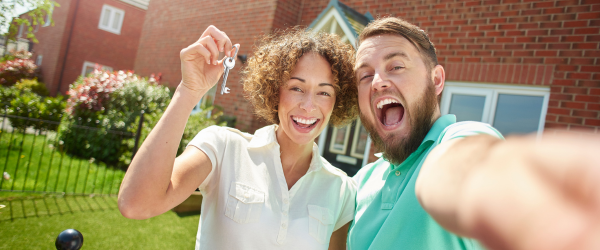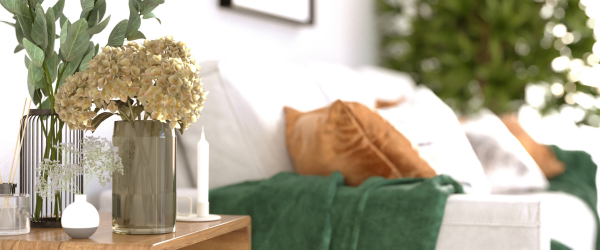Are you looking at buying your first property? Congratulations! Buying your first home is a huge and exciting milestone - but it can also be a challenge. There are lots of steps along the way and more than a few moving parts to keep track of.
At Turner Properties, we are always working with a wide range of first-time buyers to guide them through the process of buying their first house. Here’s our checklist of everything you need to do - plus some extra tips and tricks we’ve picked up along the way.
Got any questions? Get in touch and we’ll be happy to help.
Get your finances in line and decide on a budget
Buying a house is expensive. What you can afford depends on how much cash you have upfront, the monthly repayment amount you’ll be able to afford and how long you have left until retirement to pay it off.
To get the ball rolling, use this Mortgage Affordability Calculator to see what’s financially feasible for you. At this point, you might want to talk to an independent mortgage broker who can talk you through your options and get a Mortgage in Principle - a letter from a bank stating they’re happy in principle to lend a certain amount to you at a certain rate.
Top tip: The higher the deposit you have, the better the interest rates you’ll be offered, but it’s also worth remembering to set aside money for renovations, repairs and emergencies.
Choose a location and start the house hunt
Now for the fun bit! You get to decide where you want to live and what size or type of home you’re looking for, including all the basics - e.g. distance to work, local amenities, schools and more - and then work out what you can afford in this area.
Once you’ve settled on a location, it’s time to look at what’s on the market. Check our listings to find out what’s available in and around Oxford. When you’re looking at houses, it’s a good idea to settle on your essential requirements versus the ‘nice-to-haves’. Getting a second opinion from friends and family can also help you to whittle down your choices.
If you find something you like the look of, book a viewing! You won’t know what you feel until you’re standing in your future living room or kitchen and imagining your life there.
Top Tip: It’s worth revisiting the properties you like at least twice - ideally at different times of day to get a feeling for the house and the area, including light levels, noise, traffic and the neighbourhood.
Put down an offer
When you’ve decided on the house for you, it’s time to make an offer on it. Consider making an offer that’s lower than the asking price - especially if the house has been on the market for a long time, if other similar houses are cheaper, or if the owner seems in a hurry to sell. Always have in mind a maximum price before starting negotiations!
Top tip: Having a mortgage in principle agreed will let the seller know you’re serious about purchasing and have everything lined up to buy, so they’ll be more likely to accept offers below their asking price.
Appoint a solicitor
It’s an exciting moment when your offer is accepted - but there’s a lot you still need to do to get the purchase over the line. At this point, you’ll want to find a conveyancing solicitor to deal with legal documents, property searches (checks done with the local authority and other parties to uncover any legal or environmental issues), anti-money laundering checks and the transfer of funds from buyer to seller.
Get multiple quotes for local solicitors and take a look at reviews and recommendations online to find the one that’s right for you. A proactive and efficient conveyancer can make all the difference in making sure your property purchase goes smoothly.
Top tip: To avoid delays, complete and return any documents your solicitor sends you as soon as possible!
Apply for a mortgage
Technically, you should be applying for a mortgage at the same time you’re appointing a solicitor. Whether you’re applying directly with a lender or using a mortgage broker, you’ll need to gather and send documents like bank statements, references and any gifted deposit letters (if you’re getting help towards your deposit) as part of your application. This process confirms to the lender that you’ve got the deposit you say you have and that your income is sufficient to keep up with the monthly repayments.
Top tip: If you’re applying directly with a lender, check available deals again before applying for your mortgage to see if any more competitive interest rates have come up since your mortgage was agreed in principle - a mortgage broker should do this on your behalf and alert you if there are any lower rates.
Arrange a survey
Although solicitors handle the legal side of things and any environmental issues - like flood or subsidence risk - they’re not responsible for inspecting the condition of the property itself. It’s advisable to get a survey to assess the state of the property and identify any potential issues with the building that need addressing before you buy.
There are three levels of surveys - the Home Condition Report provides a surface-level assessment to catch any major issues, the Homebuyer Report is more thorough, and the Building Survey is the most comprehensive. This is the most expensive option and recommended for old houses and ‘fixer-uppers’.
Top tip: If the survey uncovers any big issues, consider lowering your offer to compensate for the extra renovation costs you’ll have to deal with. Your offer is always subject to survey.
Setting an exchange and completion date
When you’re sure you’re happy with everything at the property and your mortgage application has been successful, next up you need to exchange contracts and set a completion date.
A number of things happen when you exchange, including:
- You are now legally committed to purchasing the property on the completion date you’ve agreed.
- You are legally responsible for the property, so you should get the building insured.
- Your solicitor will normally require 10% of the deposit amount transferred to them.
The completion date is the final step to you buying and owning your first home - time to collect the keys and move in!
Moving in
The only thing left to do now is move into your new home! It’s a good idea to get everything packed up and ready to go ahead of the completion date, so you can move right away. Congratulations on becoming a homeowner!
Top tip: You might want to take a suitcase with a couple of changes of clothes, toiletries and other essentials you’ll need over the next couple of days after moving in - unpacking can take a while! Don’t forget to give your change of address to doctors, dentist, banks and utility provider.
Ready to become a homeowner?
The process of buying your first home can seem daunting, but if you take it step-by-step you could be unpacking in your new place before you know it! This checklist includes the basic steps you need to buy your home - but if you have more questions and need expert advice, get in touch. We’re here to help!



 By
By 



Share this with
Email
Facebook
Messenger
Twitter
Pinterest
LinkedIn
Copy this link